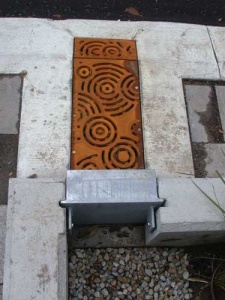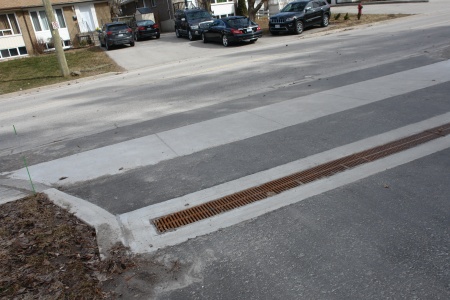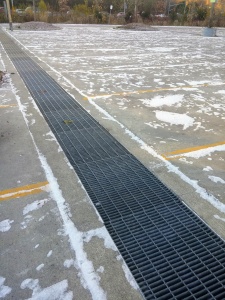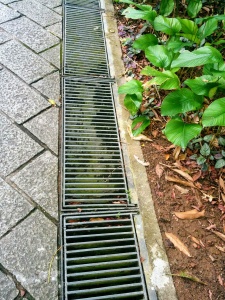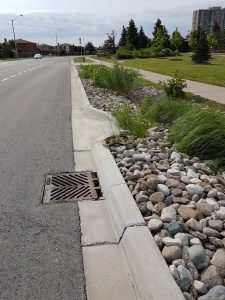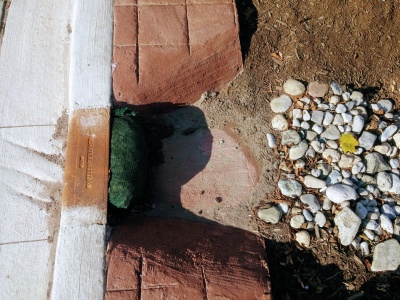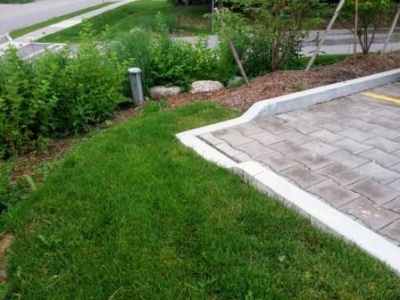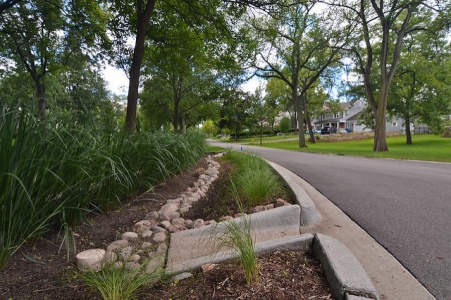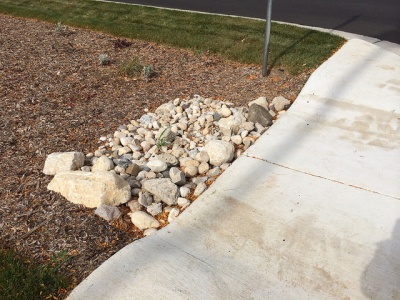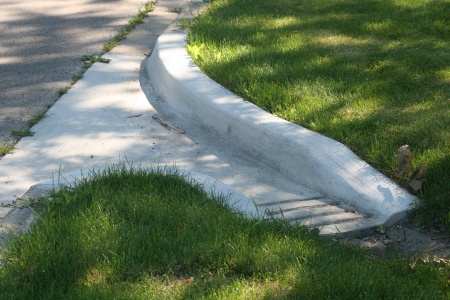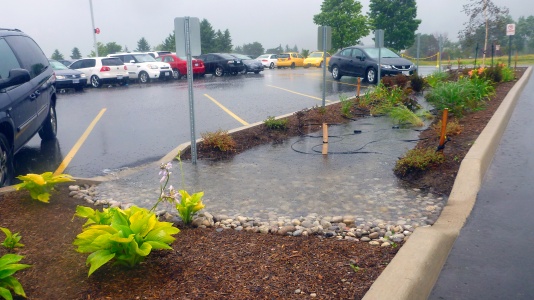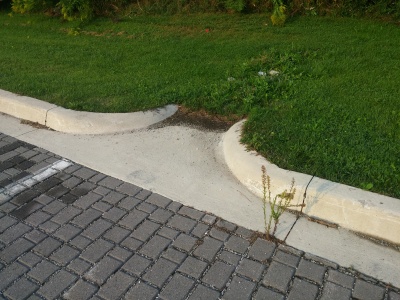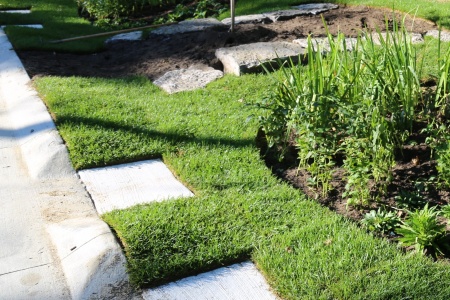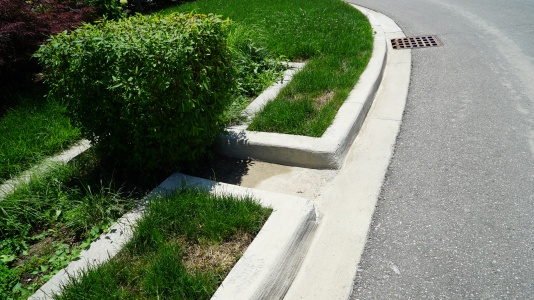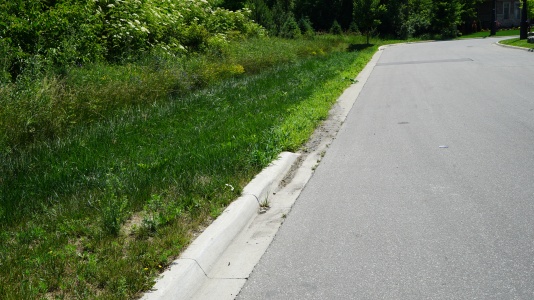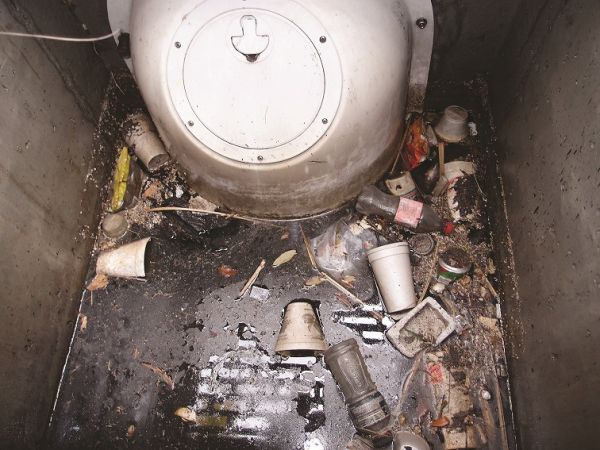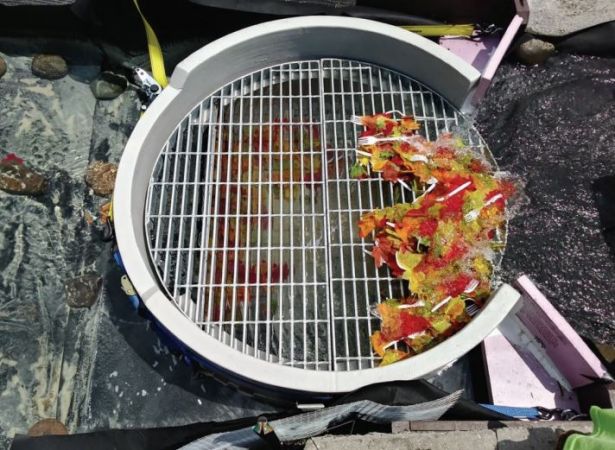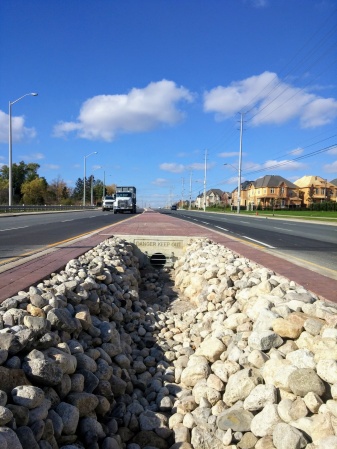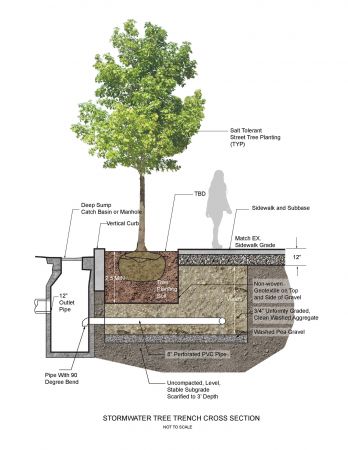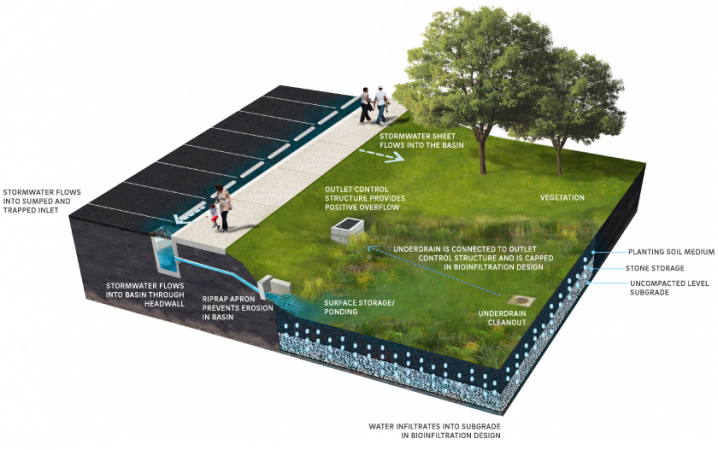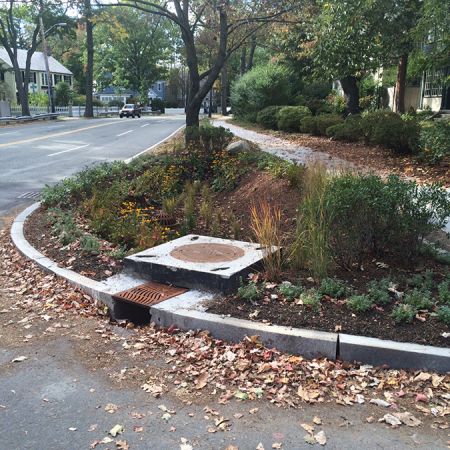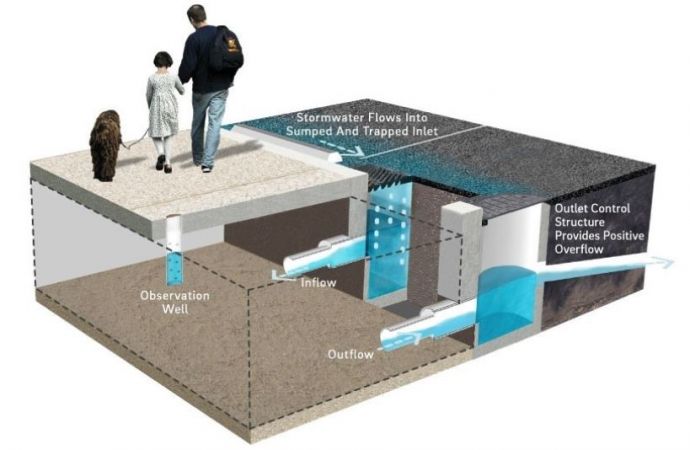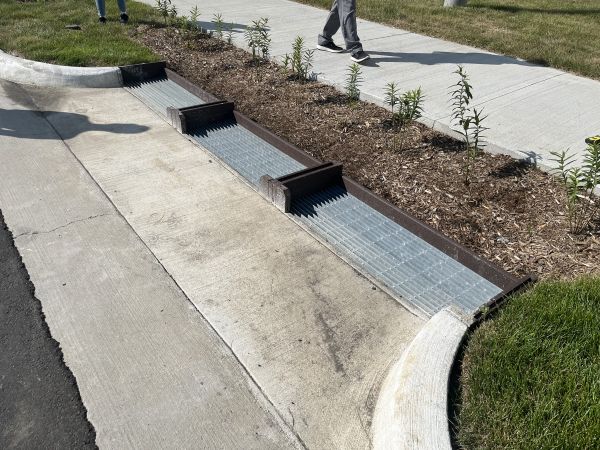Difference between revisions of "Inlets"
Jenny Hill (talk | contribs) m |
Jenny Hill (talk | contribs) m |
||
| Line 30: | Line 30: | ||
*An inlet sump is recommended to settle and separate sediment from runoff where a large amount of debris is expected. | *An inlet sump is recommended to settle and separate sediment from runoff where a large amount of debris is expected. | ||
*Water drains into a catch basin, where debris settles in its sump. After [[pretreatment]], water drains via a pipe or opening into the BMP. | *Water drains into a catch basin, where debris settles in its sump. After [[pretreatment]], water drains via a pipe or opening into the BMP. | ||
| − | *The sump can be directly connected to a perforated [[underdrain]] pipe to distribute the flow to the [[bioretention]] or | + | *The sump can be directly connected to a perforated [[underdrain]] pipe to distribute the flow to the [[bioretention]], supported [[soil cells]] or underground practices such a [[trenches]] or [[chambers]] . |
*Sump inlets should not be sited where pedestrians will have to negotiate with them. | *Sump inlets should not be sited where pedestrians will have to negotiate with them. | ||
| | | | ||
Revision as of 14:02, 14 March 2018
Concentrated flow inlets are associated with LID practices such as Bioretention, Stormwater planters, Infiltration trenches and chambers. Sheet flow alternatives include level spreaders, gravel diaphragms and vegetated filter strips. Practices such as permeable paving and green roofs receive precipitation directly, whilst exfiltration trenches are connected directly to conventional storm sewers.
Inlets for BMPs in the right of way should be located:
- At all sag points in the gutter grade
- Immediately upgrade of median breaks, crosswalks, and street intersections.
It is good practice to have several inlets sized to split higher flow between a number of smaller BMPs or a along the length of a linear pratice (Offline overflow).
| Trench drains | Curb cuts | Inlet sumps | Depressed drains |
|---|---|---|---|
|
|
|
|
|
|
|
Depressed drains: Gallery |
External links[edit]
- ↑ Mullen, T.J. Prioritizing trash capture and clean oceans: Stormwater hoods and traps lead the way in effectiveness. The Municipal magazine. June 1, 2022. Accessed: https://www.themunicipal.com/2022/06/prioritizing-trash-capture-and-clean-oceans-stormwater-hoods-and-traps-lead-the-way-in-effectiveness/
- ↑ Erickson, A.J. and Hernick, M.A., 2019. Capture of Gross Solids and Sediment by Pretreatment Practices for Bioretention. Accessed: https://conservancy.umn.edu/handle/11299/201607
- ↑ Halvorson, Tighe & Bond Studio. n.d. Halvorson, Tighe & Bond Studio. Retrieved from: https://www.halvorsondesign.com/willard-street-drainage
- ↑ Philadelphia Water Department. n.d. Chapter 4 Stormwater Management Practice Guidance 4.1 Bioinfiltration/Bioretention. Retrieved from: https://water.phila.gov/development/stormwater-plan-review/manual/chapter-4/4-1-bioinfiltration-bioretention/
- ↑ National Association of City Transportation Officials (NACTO). 2017. Urban Street Stormwater Guide - Inlet Design. Retrieved from: https://nacto.org/publication/urban-street-stormwater-guide/stormwater-elements/bioretention-design-considerations/inlet-design/
- ↑ Philadelphia Water Department. 2020. Stormwater Management Guidance Manual: Version 3.2. Accessed from: https://www.pwdplanreview.org/upload/manual_pdfs/PWD-SMGM-v3.2-20201001.pdf
